Amber is a beautiful history book, capturing and preserving fragments of prehistoric life in glorious 3D detail.
In the past decade Uwe Kaulfuss and fellow University of Otago geologist Daphne Lee have been amazed at what they have found in New Zealand amber.
Flies, spiders, mites, pseudoscorpions, nematodes or round worms, cicadas, fungi - and even tiny scales from moth and butterfly wings.
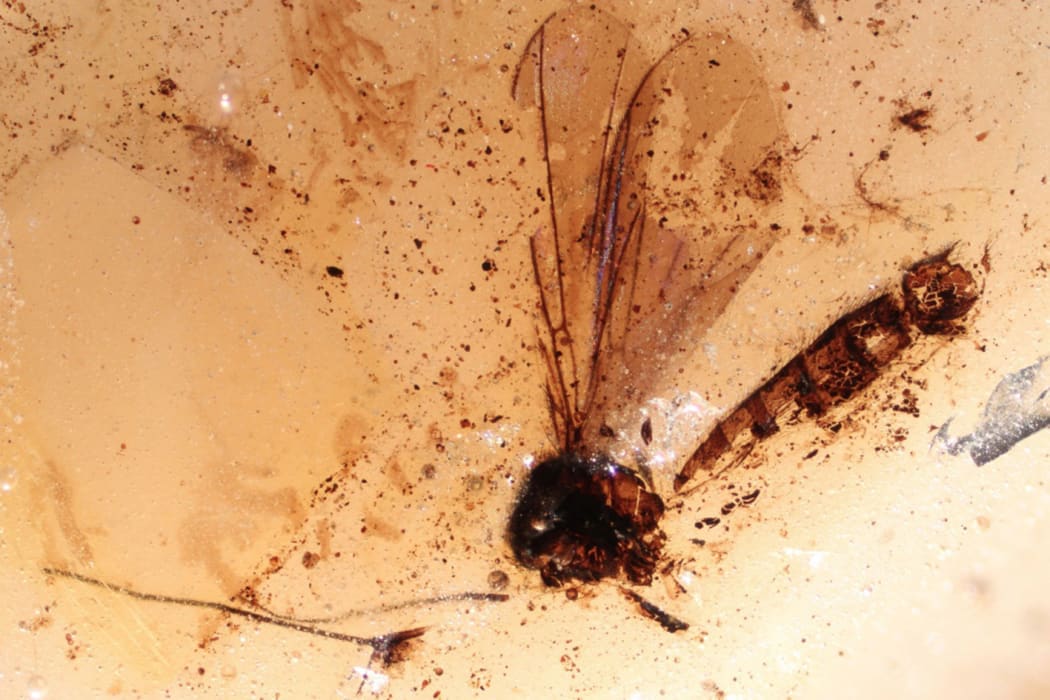
A tiny fly captured in amber. Photo: [image:113342:full]
Daphne Lee says that amber, which is fossil plant resin, is wonderful for preserving “delicate things that are just never preserved in any other situation.
“It gives a picture of the past that you don’t get from any other source.”
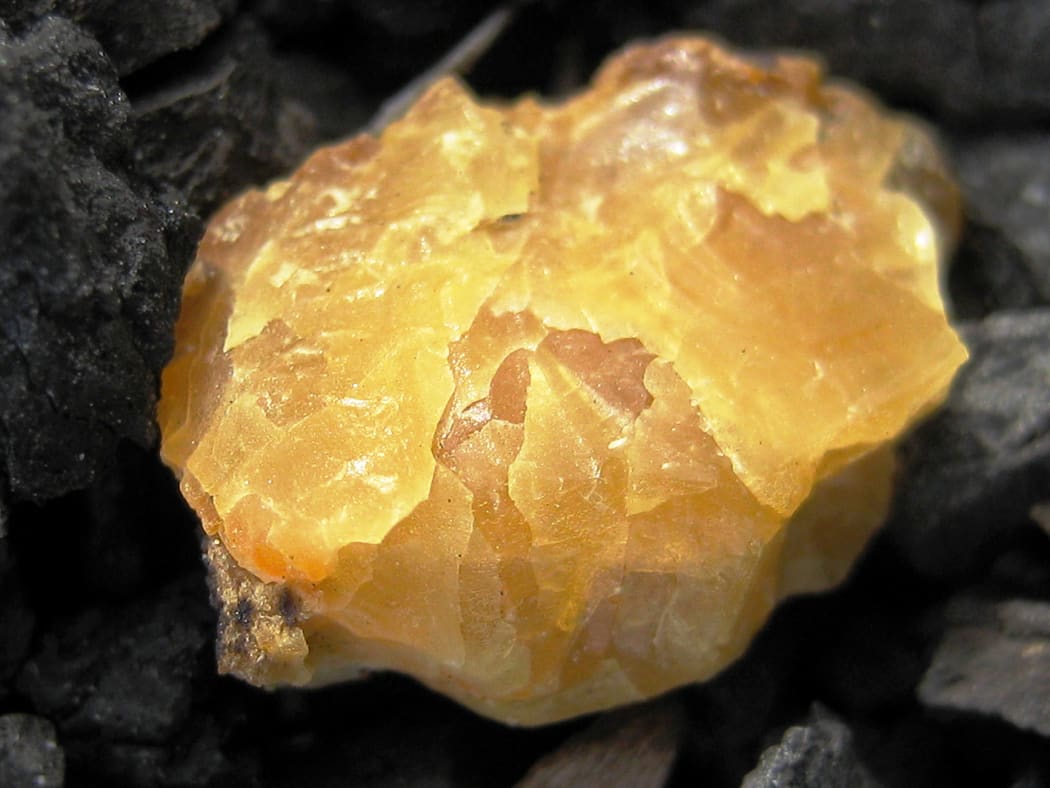
Golden opaque amber collected from a Central Otago lignite coalmine Photo: Uwe Kaulfuss, Daphne Lee & Alexander Schmidt
From plant resin to amber
Amber begins life as fresh resin, a sticky sap that oozes from damaged bark.
The resin solidifies to gum, such as the plentiful kauri samples that occupied diggers for nearly a hundred years in the gum fields of Northland.
Subfossil gum is known as copal, and only truly fossil gum is known as amber.
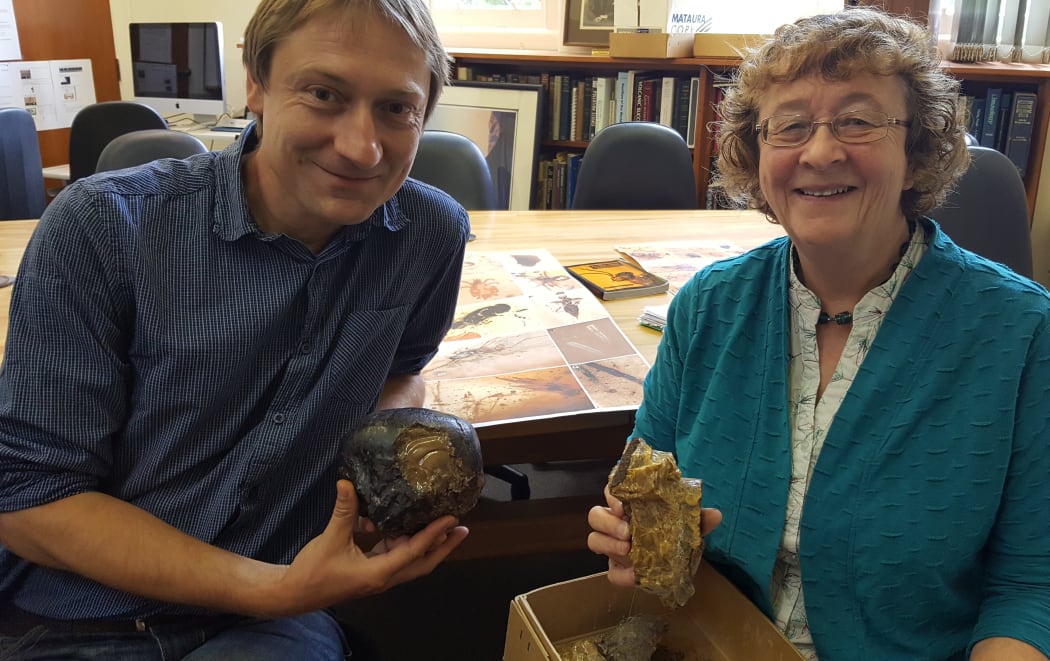
Uwe Kaulfuss and Daphne Lee with samples of New Zealand amber. Photo: RNZ / Alison Ballance
Uwe has found amber in a few different places around New Zealand, usually in coal seams and coal mines, as well as old lake sediments.
While he has found lumps of amber that weigh up to 2.5 kilograms, at some sites the amber is just tiny drops of resin scattered through the coal.
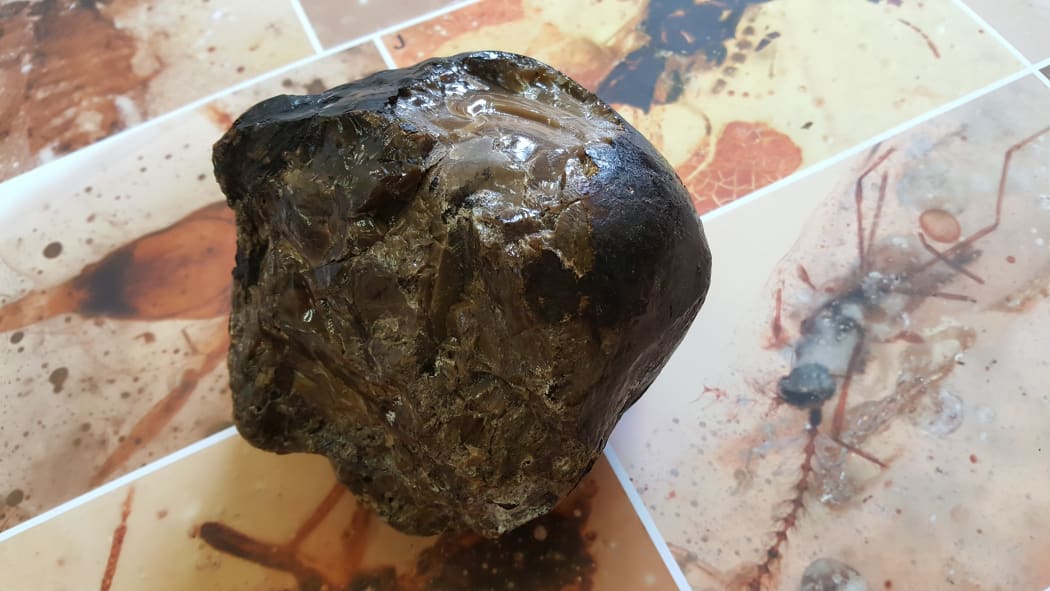
This cannonball-sized lump of amber has kept its original shape for tens of millions of years. Photo: RNZ / Alison Ballance
Discoveries from the past
Daphne and Uwe’s Marsden-funded research is relatively new. For a long time, the perceived wisdom was that New Zealand had no fossil-bearing amber; it was known that ancient kauri gum was found throughout the country (as kauri had grown as far south as Southland during warmer periods) but no one thought of it as amber.
As luck would have it, Daphne met a world-expert with an amber lab in Germany, in which he slices and polish tiny fragments before painstakingly inspecting them under a microscope.
Even better luck - amongst the first pieces of New Zealand amber sent to him he discovered something.
“It was a tiny mite – just a quarter of a millimetre in size;” says Uwe, “and it was perfectly preserved in 3D. All the details, even its gut contents, were preserved.”
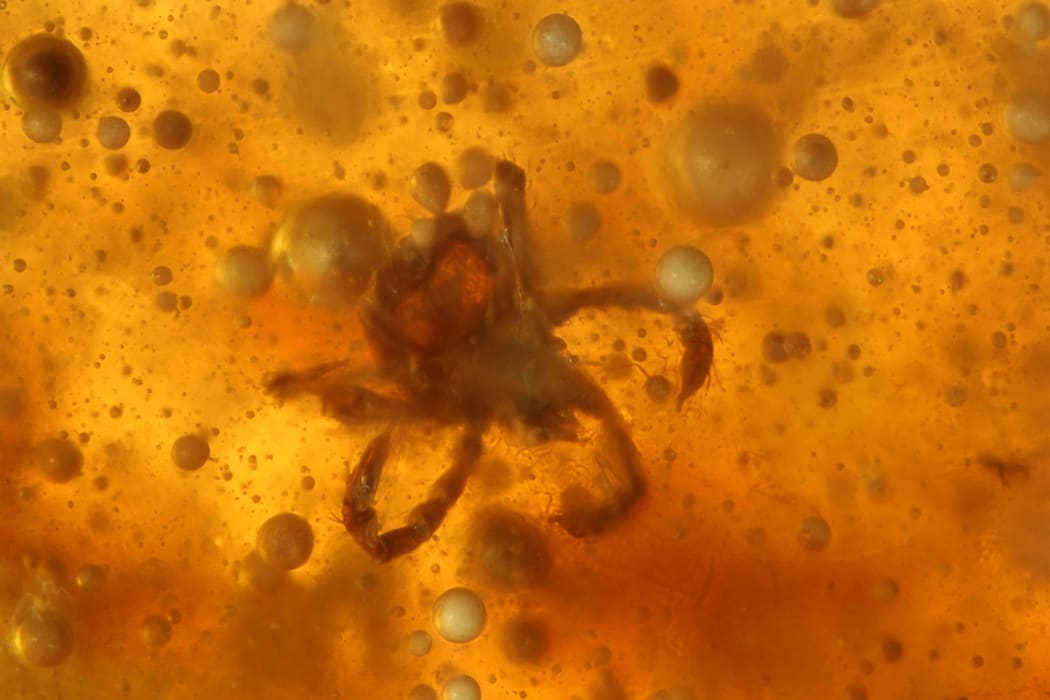
A small mite in amber that is filled with tiny air bubbles. Photo: Uwe Kaulfuss, Daphne Lee & Alexander Schmidt
That first mite joins a growing list of fossil invertebrates that Uwe has identified from New Zealand. They have been found both in amber and from several important fossil sites, such as Foulden Maar, a 23-million year old lake in inland Otago.
Uwe and Daphne have now collected nearly 500 specimens of fossil insects and spiders, of which 80 were found in amber. To put that in perspective, before the pair began their research in 2006, there were only six records of fossil invertebrates from New Zealand.
This is perhaps surprising, as New Zealand is the only place in the world with an almost continuous record of amber, dating from 70 million years ago almost to the present day.
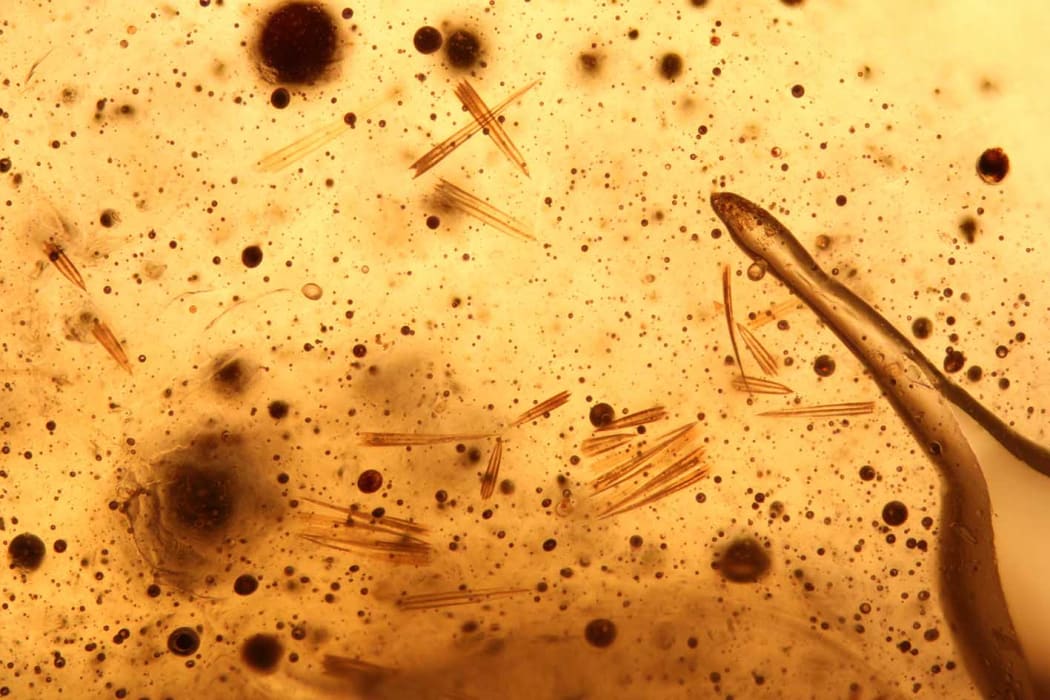
Minute scales from the wings of either moths or butterflies. Photo: Uwe Kaulfuss, Daphne Lee & Alexander Schmidt
Uwe and Daphne say they have boxes of amber waiting to be processed and are excited about what other discoveries await them.
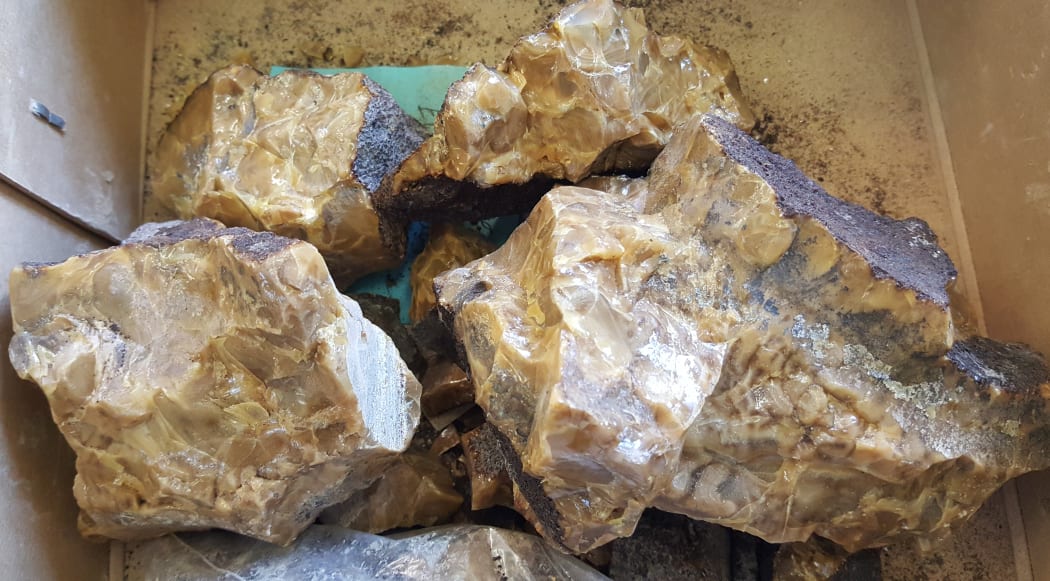
Large lumps of amber collected from a site in South Otago. Lots of New Zealand is opaque as it is filled with air bubbles. Photo: RNZ / Alison Ballance
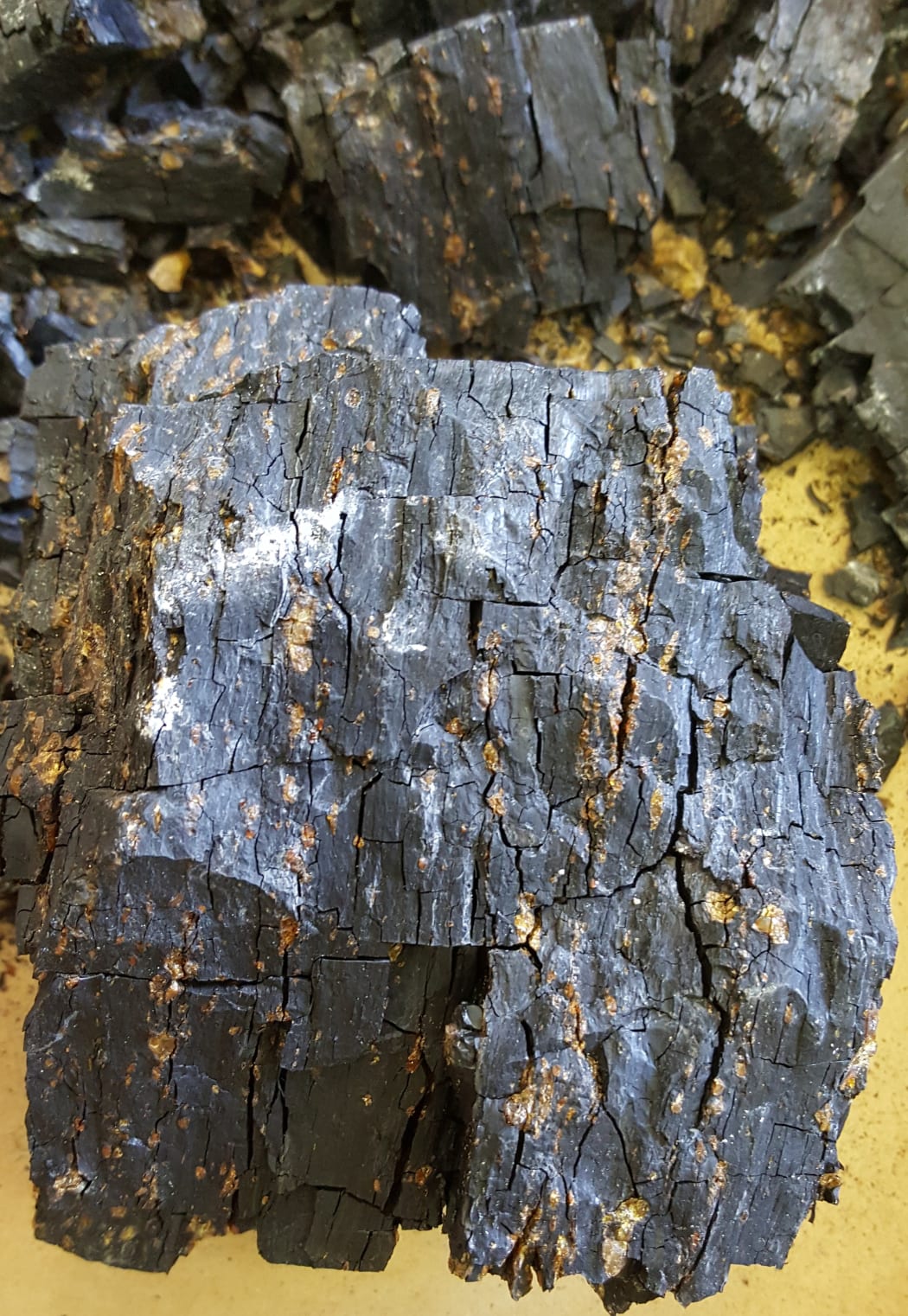
Small droplets of amber spread through a lump of coal. Even these tiny drops could contain fossils. Photo: RNZ / Alison Ballance


